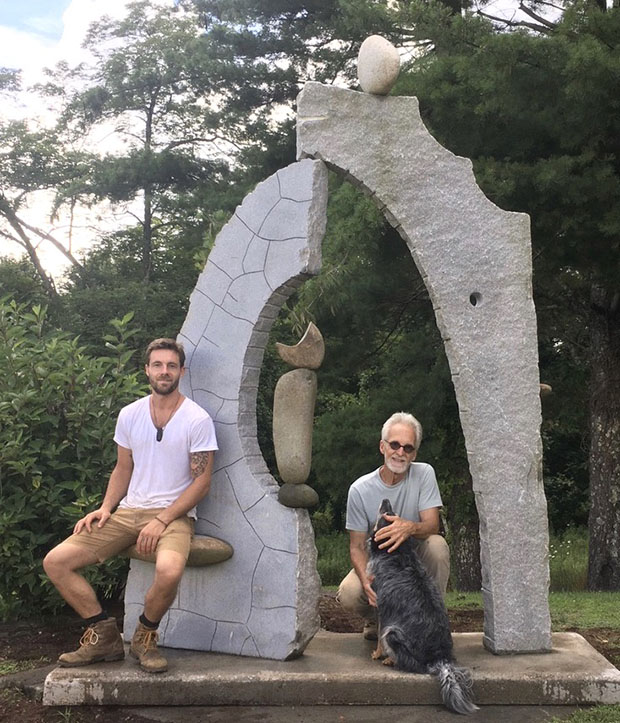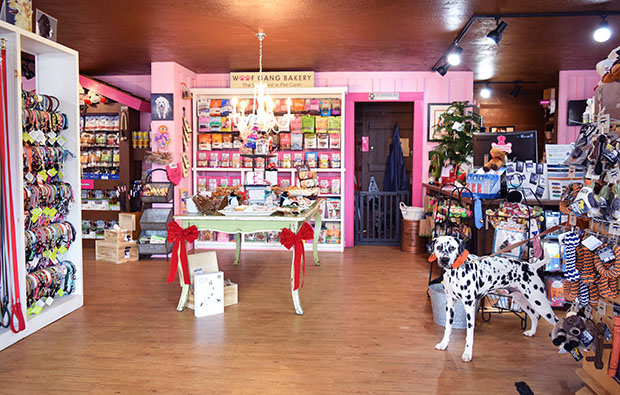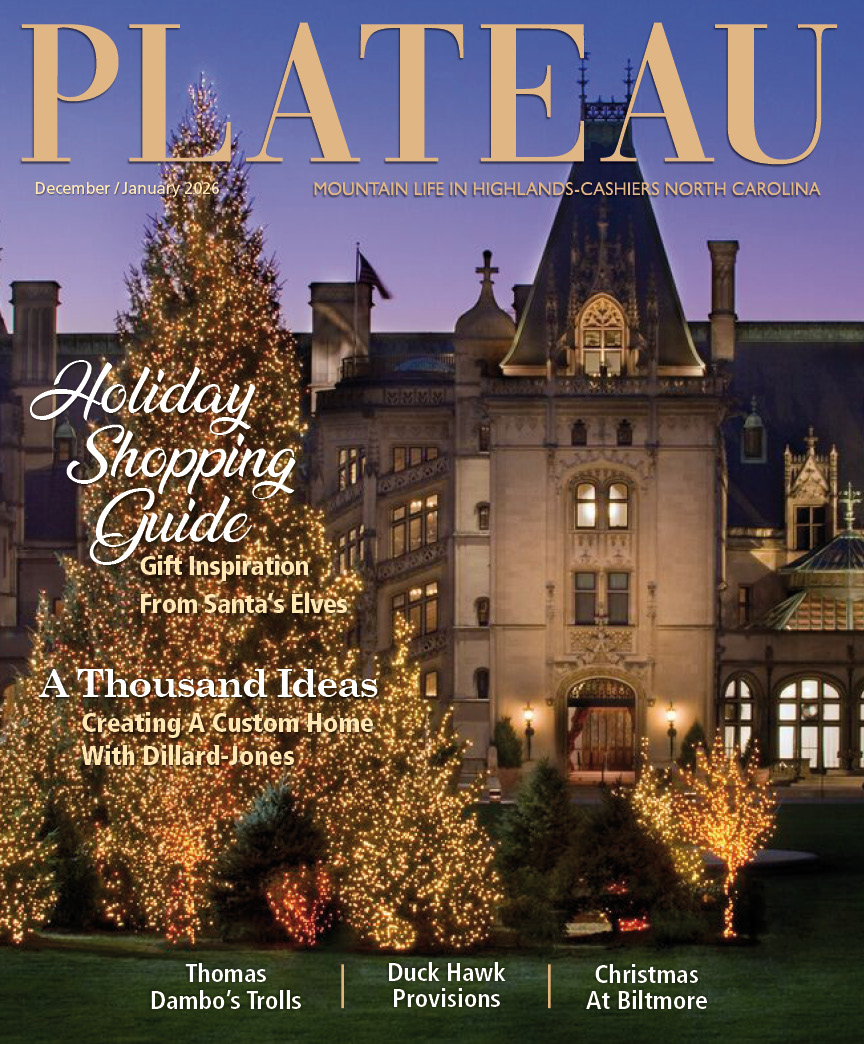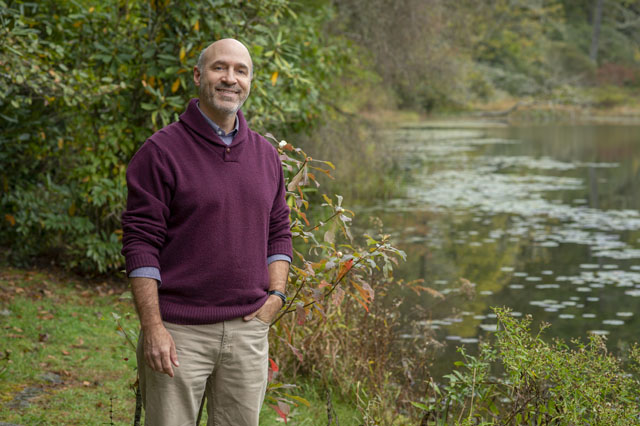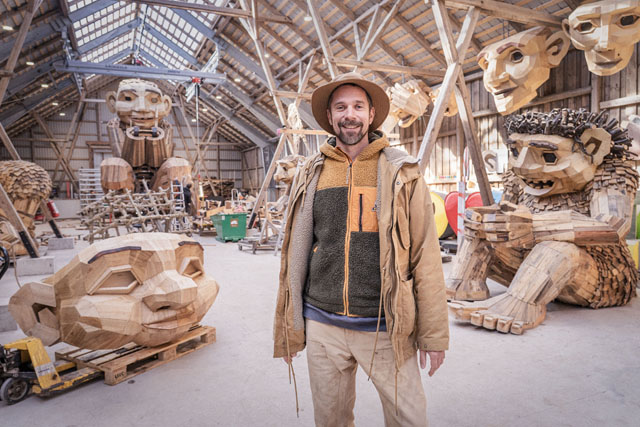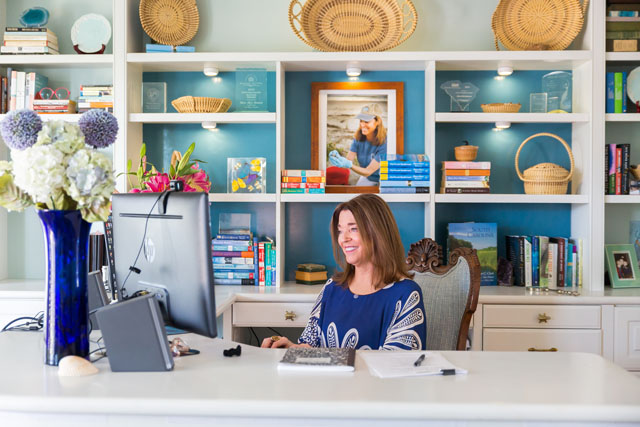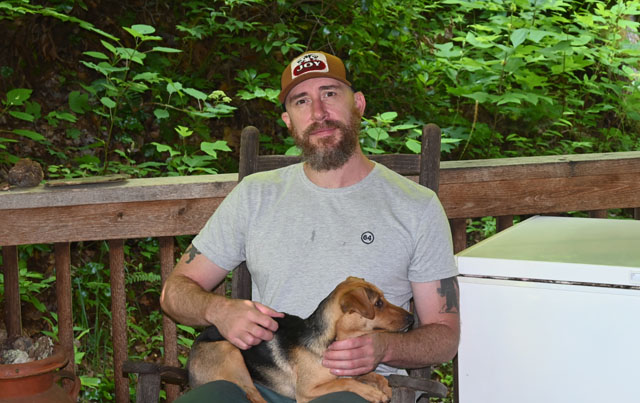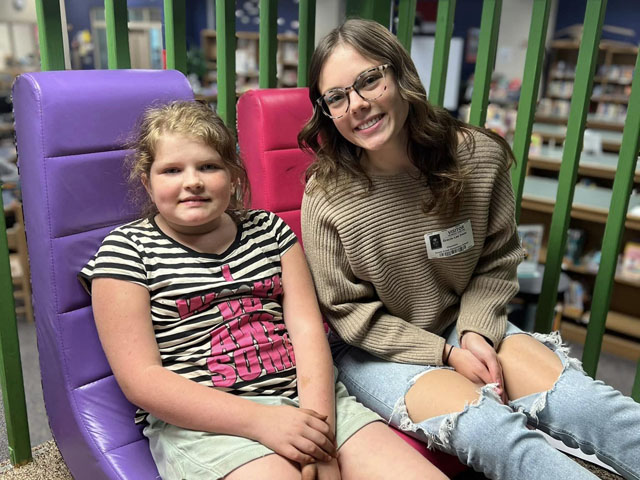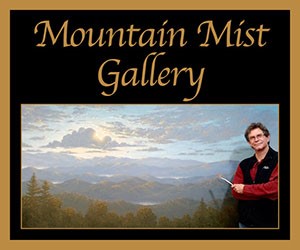Laissez les Bons Temps Rouler
07 Feb 2022
Musing a good time with Ann Strub
By Kat Ford
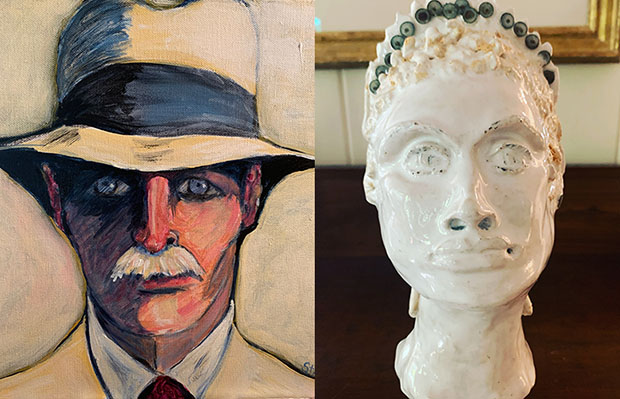
When I first moved to the plateau, I accepted a position as the retail manager for The Bascom: A Center for the Visual Arts. My move was a slow and intentional shedding of skin. Behind me was an ambitious artistic past, which began with a prestigious dream job in high-end fashion and continued into a downward spiral of creative entrepreneurial burnout. So, I pulled myself out of the West Coast, found solace in the mountains of North Carolina, ceased creating and instead focused on helping other artistic entrepreneurs, one of which was Ann Strub. My first memory of our introduction was the twinkle of joyful excitement that glimmered from the center of her eye, part secret, part knowing, part adventure.
While working at The Bascom, I made it a habit to poke my head downstairs on Mondays to see work on the easels of Studio Alive artists, of which Ann was a regular. It was a treat to see her figurative sketches, so different yet similar to her colorful paintings. As a retailer, I admired an aesthetic identifiable without a signature, a thumbprint found in gesture and style. She would often visit me in the shop, sometimes bringing me books of her favorite artists, exposing me to the work of Egon Schiele and Wayne Thiebaud. We shared a mutual love for theatre, art, Hank Williams Sr. and Chopin.
On several occasions, I joined Ann and her husband for dinner or lunch. To sit at the table of Dr. Richard Strub and his wife is to matriculate, with a syllabus that includes everything from Epicurean delights to neurology. There is warmth in learning through sharing ideas and experiences, and during the summers of 2018 and 2019, I began to feel the first embers of a creative rekindling in a fire that had long since burned out. Here, while laughing and learning with the Strubs, I was able to reach back in time, past the creative entrepreneur, all the way back to a little girl with a big imagination reading of a world she couldn't wait to grow up and explore. While sitting across the couch from Ann, I gleaned, evoked and considered rejuvenation.
Setting the Stage
Ann Strub was born on January 15, 1941, in Columbus, GA, but New Orleans was always her destiny. In the book, "Ann Strub Paints Her Muse," Ann reveals that her mother, Evelyn Allison Daniel Cox, and her experience as a student at Newcomb College for Women in New Orleans in the late 1920s was an inspiration from the time she was a child. Ann, too, attended Newcomb, earning a bachelor's in theatre in 1963. She took advantage of a French government scholarship at La Sorbonne for a year, training under Jacques Lecoq, a French stage actor best known for his teaching methods in physical theatre, movement and mime. After watching a distressed classmate complain about her career and a bottle of spilled tiger's milk, Ann questioned the likelihood of success in professional acting. "I just looked at her and thought, 'Oh my God, I don't want to be thirty years old and end up like that.' So, I decided to study academic acting instead of professional acting; when I finished my year at La Sorbonne, I went back to Tulane and graduated with a master's degree in drama and communication."
Upon graduation, she had opportunities to teach at the Goodman Theatre in Chicago or to study at The Neighborhood Playhouse in New York. Instead, she decided to wait a year and fulfill a lifelong dream to live in the French Quarter. She taught seventh grade English at Edna Karr Junior High School and was set up on a blind date with Richard Strub on the first of March. He proposed soon after and asked if she would wait for two years while he went in the Peace Corps. "I told him, no, I wasn't waiting for anybody to go into anything." They were married on June 15, 1966, and after three months in Washington D.C. learning Portuguese, they spent the next two years in Brazil with the Peace Corps. Next came several teaching jobs (one of which resulted in an unrenewed contract because her "hair was too long and skirts too short"), including a position as one of the first Head Start teachers in New Orleans working with underprivileged children. When the Strub's son, Tyner, was born in 1971, Ann shifted her focus to acting in New Orleans theatres, commercials and movies, most notably playing a secretary in Oliver Stone's "JFK." Later, while working for the Contemporary Art Center, her night program which taught theater for adults was noticed by the University of New Orleans and they hired her as faculty. After her father's death and realizing that she was not receiving pay equal to her male contemporary, Ann experienced burnout. She decided at the age of 50 it was time to go back to school, this time for her second creative love, the visual arts.
Painting Her Muse
Ann studied painting, drawing, watercolor, acrylic and oil for eight years at the New Orleans Academy of Fine Arts. She was encouraged to show her work in galleries, quickly finding success. It was here that her original muse, her mother, took shape beneath her brush. Images sprang to life from the 1920s and 1930s, swinging hemlines, satin slippers, all conjuring memories of Evelyn Cox's Newcomb stories and a romantic, Gatsby-esque New Orleans. Her love for the figurative, bold colors and outlines radiated through her body of work. In 1996, she began using a technique that included painting the canvas black. Later, a chalk drawing creates the composition, and when washed after painting, the resulting image retains a strong black outline. The process became distinctive of her future work.
After the devastation of Hurricane Katrina in 2005, the Strubs began summering in Cashiers, NC. Ann became involved with The Bascom: A Center for the Visual Arts, where she combined her love of teaching and the arts, leading painting workshops and selling her work in The Bascom Shop. The woman with too-long hair, too-short skirts and a willingness to take a stand on equal pay also carried through in this artistic chapter. She was one of the "Women of the Storm" who lobbied in Washington D.C. for New Orleans post-Katrina and created images celebrating the 100th anniversary of the 19th Amendment in 2019, following in the footsteps of her suffragette grandmother, Eva Daniel.
Edifying Education
During COVID, Ann took advantage of her free time, learning a new way to express herself in ceramics. She first took a workshop with Kelly Thiel at The Bascom and now learns from sculptor Kim Bernadas in New Orleans. Like those Studio Alive sketches and her immediately distinguishable paintings, Ann's clay work is undeniably hers, a thumbprint in clay. "It was revitalizing to go to something new, something that I had to work on, be a neophyte and learn." Her studies under Bernadas include replicating a human skull as a measurement reference to make sculpted heads scientifically accurate. This appreciation for a classical approach is akin to classes she took with Hal Carney while obtaining an art minor at Newcomb. For further evidence of her appreciation for the sciences, look no further than her husband, Dr. Richard Strub; Ann illustrated the textbooks he wrote on neurology.
Continuing education is not just a creative avenue for Ann; it is a long-standing tradition in her family. Her grandfather, Dr. Roland Bird Daniel, was an educator and instrumental in starting Columbus State University in Georgia. With this academic modeling, his children and grandchildren all pursued undergraduate and graduate degrees with an appreciation for higher learning. Ann's mother started a scholarship in her father's name at Emory University; Ann continued the legacy, creating a scholarship in her grandfather's name at Columbus State University's Department of Art. These are not the only family traditions Ann is proud to continue. With a grandmother who was a suffragette and a grandfather who was friends with George Washington Carver, she also articulates the importance of befriending people from different backgrounds, embracing equality regardless of circumstance, striving to do the right thing and being kind. Passing these traditions down is evidenced not only through the creation of scholarships but in her preservation work for historical structures and desire to create a platform for authentic historical narratives in New Orleans.
Passing a Good Time
The artistic mind yearns for a muse, which can come in all shapes and sizes. Learning and broadmindedness consistently prove to be reliable kindling. This type of exploratory education doesn't only occur in echo chambers. On more than one occasion, I've watched the twinkle in Ann's eyes set ablaze as we debated differing opinions. She once told me, "I don't mind having conversations with people who have different viewpoints, so long as they are civil and both parties can articulate their points." ‘Iron sharpens iron’ is true of both wit and soul. While the artistic mind yearns for a muse, all minds need one. The gift of forever learning doesn't solely demand the traditional avenues of academia or require an end goal of vocation.
For many creatives, the need to define artistic self-worth too often falls between the lines of a spreadsheet. It is easy to see why; selling one's work is often used as supplemental income or, for some, a full-time job. But Ann reminds us that the creative process can flow- acting, painting or sculpting, sometimes as a career, other times as a hobby. "It is not so much a desire to sell, as it is a desire to create what I have inside of me and wants to get out and be celebrated. The things that make you feel good and comfortable are the things you do best, because you pursue them."
Upon first meeting Ann, when I was drained creatively, I was reminded of my first muse- learning, and found renewed joy in something I loved as a child- writing. Now, to avoid burnout, I've made a point to ensure my energy is not spent solely on income-driven pursuits. Next on my list are interests I set aside during college, including playing the guitar, singing in show choir, pursuing fluency in Spanish, parliamentary procedure, civics and public speaking.
In New Orleans, they say, "laissez les bons temps rouler," which means "let the good times roll." It is within this spirit that learning and creativity thrive. Learning should be fun; the beginner’s mind ought to be celebrated and doesn't need to stop with age. "Right now," says Ann, "I've got three houses with gardens. I really enjoy those projects, designing them, creating them, planting them, the look and feel of them. I feel the same way about art. It's my fun; it's my focus. There is just so much that there is to do out there. It's good for you mentally and good for you physically."

